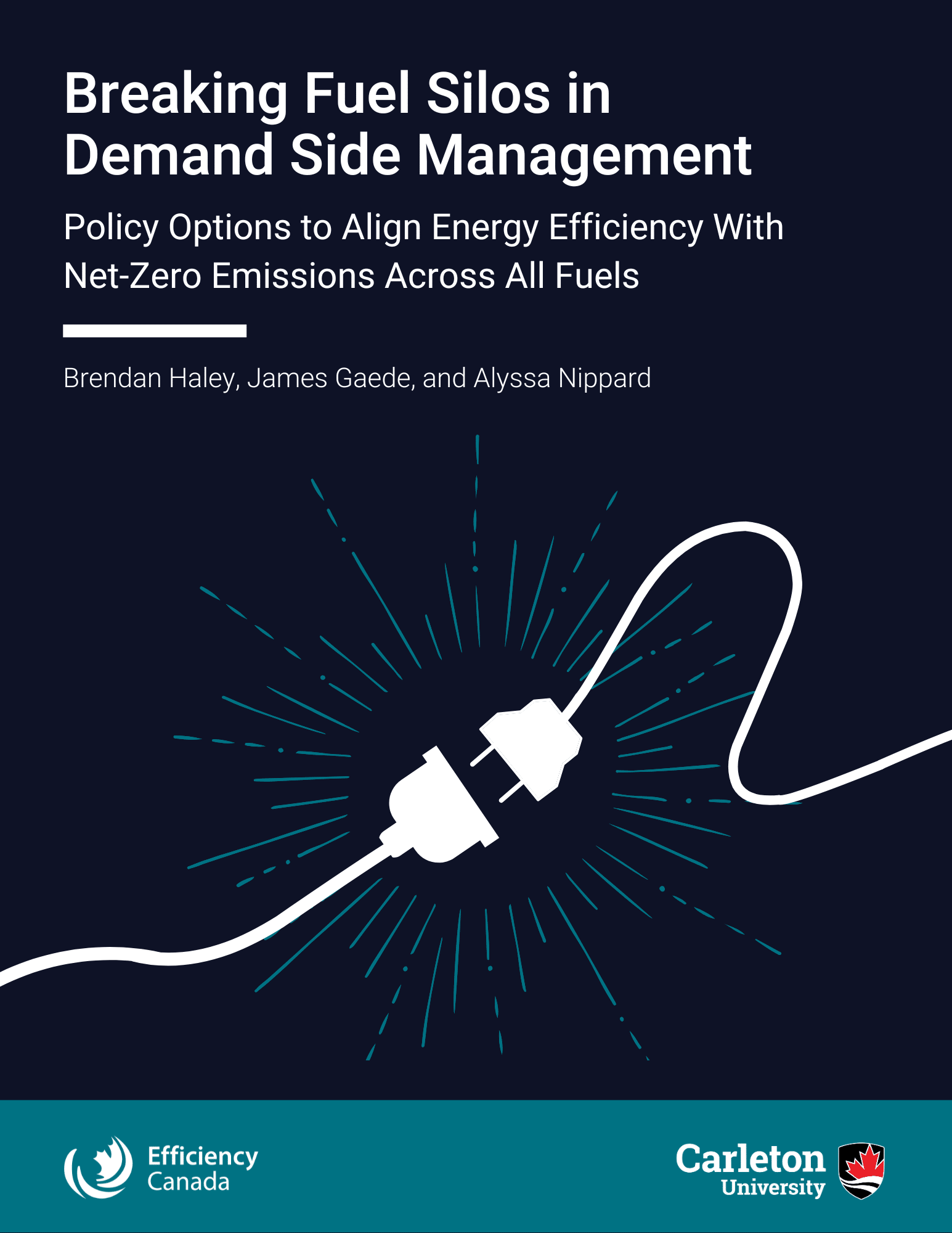Ontario’s new electricity DSM plan: How does it stack up?

James Gaede
Director of Research
January 14, 2025
Blogs | News | Provincial Policy
- Ontario’s new eDSM framework significantly expands electricity demand-side management in the province with a 12-year, $10.9 billion budget.
- The new plan improves Ontario’s benchmarks on timelines, budgets, and energy savings targets relative to other leading provinces but may not be enough to secure leadership or match leading U.S. states.
- The plan expands the scope of electricity DSM in Ontario to include support for residential solar power and energy storage. It is accompanied by a regulatory change to allow the IESO to pursue beneficial electrification.
- While the new plan stands to deliver needed flexibility to the provincial electricity system and improve affordability, regular review and updating of demand-side potential estimates will be critical to its success.
On January 7, 2025, Ontario announced a new electricity demand-side management framework (‘eDSM framework’). It includes a total budget of $10.9 billion (roughly $900 million per year, on average), targeting an estimated 18 TWh of electricity savings and 3,000 MW of peak demand savings by 2036. This framework is an important component of the province’s latest “Affordable Energy Future” vision paper. It comes alongside other initiatives to enable the IESO to pursue beneficial electrification through its demand-side management activities and to develop a province-wide integrated energy resource plan.
This review considers how Ontario arrived at this framework and benchmarks it against leading provinces and states. Overall, the eDSM framework represents a substantial expansion of Ontario’s demand-side management programming (on the electricity side). It brings the province closer in line with other leading provinces, but does not yet establish clear leadership. The expanded scope offers needed flexibility to the provincial electricity system and helps advance Ontario’s vision of being an energy superpower. It also improves affordability and reduces energy poverty for those most in need. Regular review and updating of the need for and potential of demand-side resources will be critical to its success.
Demand-side management (DSM) involves programs and strategies that help people and businesses reduce energy waste and use energy at times that are better for the grid. By reducing energy use during peak periods or shifting it to off-peak hours, DSM lowers energy bills, supports affordability, and ensures a more reliable grid. For utilities, DSM reduces the need for costly infrastructure upgrades, improves grid stability, and helps integrate renewable energy. By making energy use smarter and more flexible, DSM enables a cleaner, more sustainable, and economically efficient energy system that benefits everyone.
How did we get here?
The eDSM framework is Ontario’s fourth electricity demand-side management plan since 2015. The 2015-2020 Conservation First Framework (CFF) was originally estimated to achieve 8.7 TWh of energy savings, but was ended with a change of government in March 2019. An 18-month interim framework followed, retaining some commercial and low-income programming but eliminated general residential programming.
Next came the 2021-2024 Conservation and Demand Management framework, with an initial budget of $692 million (i.e., approximately $173 million per year, on average). Following the mid-term review of this plan and updated load forecasting from the IESO, the budget was increased to $1 billion. The revised plan aimed to achieve 3.8 TWh and 725 MW of energy and peak demand savings, respectively, over the plan’s full timeline.
The new eDSM framework again comes in the wake of updated load forecasting. The IESO now anticipates 75 per cent growth in demand by 2050 — equivalent to annual load growth of approximately 1.9 per cent. However, the targeted energy savings of 18 TWh fall short of the “max achievable” potential for 2036 that was identified in the 2022 Achievable Potential Study (approximately 23 TWh), which itself was based on an earlier load forecast.
It is worth noting that the IESO’s own Pathway to Decarbonization (P2D) report from 2022 estimated a ~98 per cent growth in electricity demand (2.7 per cent average annual growth) to achieve economy-wide net-zero emissions by 2050. The latest load forecasts from the IESO are not based on the same assumptions as the P2D – notably, the load forecast that informs this eDSM plan does not include broad-scale building space heating electrification or broad-scale industrial fuel-switching for process heating.
What is the implication of this? When electricity demand increases, so does energy savings potential. So, in futures with greater electricity load growth and/or decarbonization, there is likely potential for higher energy savings. Ensuring that periodic review of the framework aligns with updated load forecasts and updated achievable potential studies will be critical to the long-term success of the plan.
How does the plan stack up?
Efficiency Canada has tracked and benchmarked provincial demand-side management planning and outcomes 2019. Our benchmarking suggests that the eDSM plan will improve Ontario’s standing but does not make it a leader
Using IESO’s 2024 Annual Planning Outlook forecasts, the targeted 18 TWh in annual electricity savings between 2025 and 2036 represents an average annual savings rate of approximately 0.82 per cent of net annual energy demand. Actual realized savings could vary quite a bit from that but would have to be considerably higher to match leading Canadian provinces. For example, Prince Edward Island hit 1.49 per cent and Nova Scotia 1.07 per cent in 2022. In our first Scorecard, Ontario itself hit 1.4 per cent in 2017.
Leading jurisdictions in the U.S. are targeting far higher levels of annual electricity savings. Our most recent Canada-US comparison report found that, in 2021, eight states had annual electricity savings targets exceeding 1.5 per cent of forecasted sales. New York had an annual target of two per cent. A two per cent annual savings rate over 12 years in Ontario would be equivalent to approximately 43 TWh of incremental electricity savings.
Other provinces are increasing their energy efficiency efforts as well. In November 2023, Hydro-Quebec released its Action Plan 2035, in which the utility stated an aim to double its electricity savings to 21 TWh, or 3,500 MW, by 2035. In our 2024 Scorecard, the current demand-side management plans for Efficiency Nova Scotia and FortisBC have these utilities saving an average of 1.26 per cent and 0.77 per cent of electricity sales, respectively, over their plans’ timelines. BC Hydro has also recently stated that it aims to increase funding for energy efficiency by 60 per cent.
The 12-year timeline of the Ontario eDSM framework is laudable, though other provinces also have long-term energy efficiency resource policies. Manitoba has a 15-year (2020-2035) energy efficiency resource standard, requiring 1.5 per cent in annual energy savings (about half of which is met through codes and standards work, however, which are not included in Ontario’s latest savings targets), and New Brunswick introduced requirements in 2022 for NB Power to increase savings levels to 0.75 per cent by 2029, and for each subsequent year afterward. As mentioned above, Hydro-Quebec has targets for energy efficiency extending to 2035.
In Efficiency Canada’s submission to the consultation on the proposed eDSM plan, we called upon the province to set an annual budget for the framework at a minimum of $500 million but up to $900 million if the province wished to support a broader program portfolio and match leading Canadian provinces on a per capita funding basis. At $10.9 billion over 12 years, the eDSM framework matches almost exactly the $900 million annual figure, which is equivalent to roughly $55 per capita. That is a big jump from the approximate $12 per capita for electricity DSM spending tracked in the 2024 Scorecard and in line with Hydro-Quebec’s 2025 budgets (~$56 per capita) and current spending levels in Nova Scotia (~$60 per capita).
This benchmarking suggests that the Ontario eDSM plan is competitive with other leading provinces but may not be enough to match leading U.S. states or securely position Ontario as a Canadian leader in electricity savings.
Expanding the scope of DSM
The above review focused mainly on aggregate energy efficiency budgets and savings targets, but the plan’s design is equally important. On this front, Ontario is going to be a place to watch because it has significantly expanded the scope of DSM over a long term.
The 12-year timeline, with interim reports and assessments, provides significant certainty. Many DSM plans are only three to four years.The eDSM program is also bringing back what was previously cancelled — specifically, comprehensive general residential programming. It also commits to the continuation of dedicated funding for low-income and Indigenous energy efficiency programs. We will have to wait for a more detailed plan to be released to benchmark funding levels for these initiatives. Nevertheless, these programs will be essential to improving energy affordability in the province.
Ontario has also provided a more comprehensive definition of DSM than seen in other jurisdictions. The eDSM framework includes new support for behind-the-meter customer generation and distributed energy resources like solar photovoltaics and battery storage. It includes “local eDSM” activities designed by local distribution companies, which could expand geo-targeted energy-saving strategies that avoid distribution system costs.
The plan also exists alongside a new directive that makes “beneficial electrification” part of DSM, defined as “measures which involve using electricity to reduce overall emissions in Ontario in a manner that minimizes electricity system impacts.” This more expansive definition of DSM activities is not frequently seen in other jurisdictions (for an in-depth review of initiatives underway in other provinces, see Efficiency Canada’s “Breaking fuel silos in demand-side management” report).
In all, these changes in DSM mean Ontario will have greater ability to find energy savings and manage demand across time and geography. This will provide needed flexibility to the electricity system, reducing costs and greenhouse gas emissions. Expanding programming and incentives for residential solar power and energy storage will give Ontarians more choice and help them to reduce their energy costs. But, a plan is only as good as the paper it’s written on – the province will now need to deliver on it.
Breaking Fuel Silos in Demand Side Management
Policy options to align energy efficiency with net-zero emissions across all fuels
This report surveys policy options to align DSM strategies with net-zero emission goals by breaking down unhelpful fuel silos and explores Canadian experiences with institutional misalignments and innovative cross-fuel policy initiatives.


